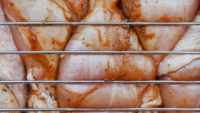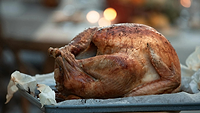Major UK Retailers Below Campylobacter Chicken Limit in First Three Months of 2021

In the first three months of this year, none of the top nine retailers in the UK reported Campylobacter in chicken test results near the Food Standards Agency (FSA) limit.
The FSA maximum acceptable level is 7 percent of birds with more than 1,000 CFU/g of Campylobacter.
The supermarket that recorded the worst contaminated chicken results was Tesco, with 4 percent of 300 samples above 1,000 CFU/g in the first quarter of 2021. This was down from 6 percent in the fourth quarter of 2020.
Sainsbury performed better, with around 2 percent of chickens sampled above 1,000 CFU/g compared to 7 percent in the fourth quarter of 2020.
Asda reported 1.3 percent tested positive for the highest level of contamination in the latest quarter compared to 1.8 percent in the previous three months.
Campylobacter is the most common cause of bacterial food poisoning in the UK, and the dose needed to make people sick can be as low as a few hundred cells.
Until the second quarter of 2019, the FSA published data from these retailers on Campylobacter in fresh shop-bought UK-produced chickens.
For Marks and Spencer, 2 percent were in the maximum category in January, 3 percent in February, and 4 percent in March based on a sample of 292 chickens randomly taken from UK store shelves. It is the only retailer to report data for the 100 to 1,000 CFU/g category. A total of 15 percent of samples were in this bracket in February and 17 percent in March.
Co-op results show 1.8 percent of chickens sampled had contamination at levels greater than 1,000 CFU/g compared to 0.9 percent in the previous quarter. Lidl recorded about 1.5 percent of birds in the highest category, which is down from 2.5 percent in the fourth quarter of 2020.
Of the 112 birds tested that were sold at Morrisons, none had the highest level of contamination. The figure was 0.8 percent in the last set of results. Levels at Waitrose and Aldi for the quarter stayed at zero percent in the above 1,000 CFU/g category.
Source: Food Safety News
Looking for a reprint of this article?
From high-res PDFs to custom plaques, order your copy today!








